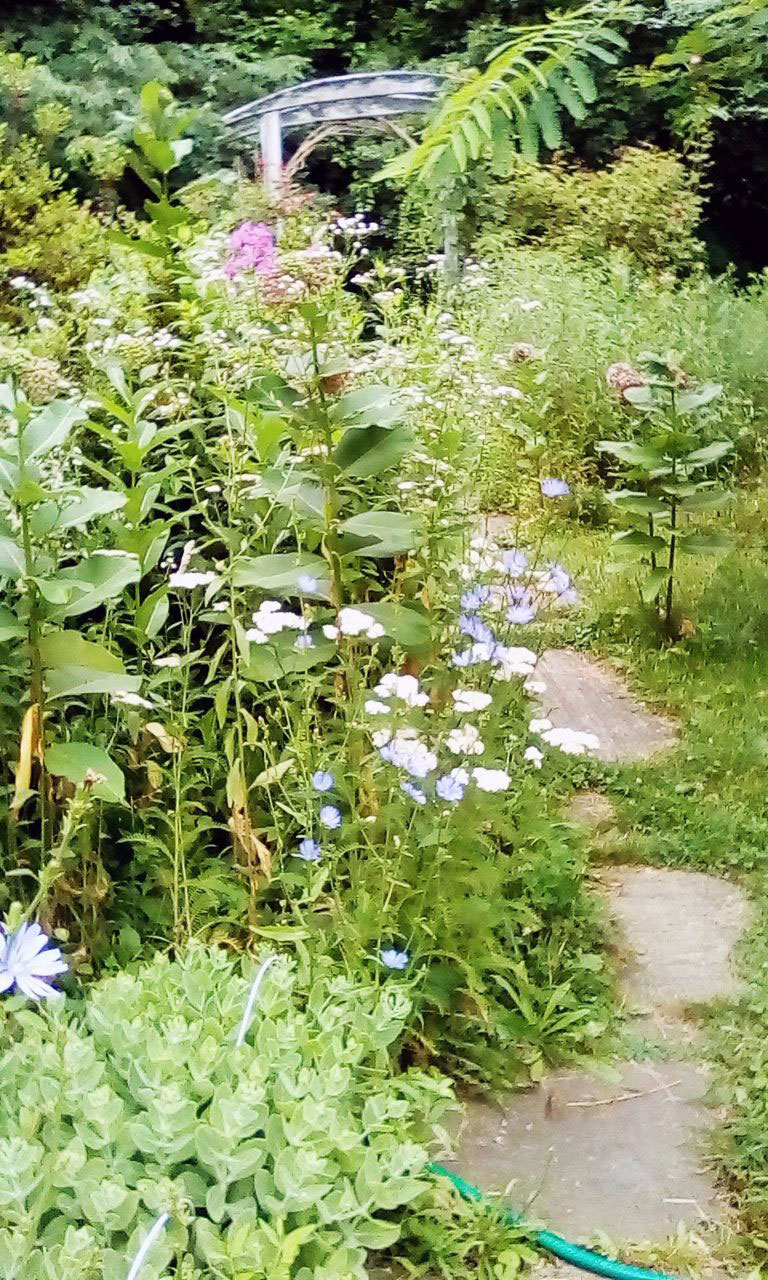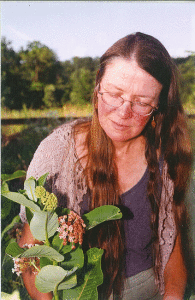My Wild Gardens,
“Oh the place that I’m from is the place that I won,
It’s the joy of my heart, it is my own.
It took many a year but I’m finally here…
With a hey and a hoe to the field I go.”
~ from Song of a Homesteader by Christine

For 30 years now, I have been intentionally integrating wild native plants as habitat for insects and birds, with multiple beds for organic veggies and fruit. When I first found this 11+ parcel of fertile land in the Catoctins 30 years ago, there were no trees, no flowers, and no house. It was part of a 200+ acre homestead, which previously grew corn and hay, but later was mowed regularly in order to sell. It was pretty much a blank page when I found it, perfect for an artist’s/gardener’s creative activity!
The first thing I did to start a garden was to plow an acre up and then let it rest for one year to see what wild plants emerged. I had taught myself how to identify wild plants from the time they first emerge, and I was blown away by the diversity in the soil. There were, and still are, multiple varieties of wild aster and goldenrod, wild evening primrose, medicinal herbs like St. John’s Wort, mullein and vervain, wild edibles such as the delicious lambs quarters, ground cherries, and purslane; smaller less conspicuous flowers like blues, and pinks, lots of milkweed, and a host of other mostly native plants.
So, as I laid out the beds for my mostly heirloom veggies, I kept those various wild plants in mind. Continuing to read and study, I learned that I was naturally practicing what is called ultra-organic gardening, where wild plants are allowed to grow—with some discrimination— between, and even in, the beds of vegetables. Also, on the property trees like locust, sassafras, ash, redbuds, and dogwoods came forth on their own so that presently, along with species I brought in over the years, I have a nice diversity of trees. I also reduced lawn size to mostly pathways, and now have a solar mower. Due to the slow progression of blossoms from spring until fall, I have a wide diversity of insect life such as honey bees, bumble bees, butterflies, and hummingbirds, and I am always finding new and unusual insects. I literally have no more bad bugs like the asparagus and bean beetle and have not seen squash beetle in years. It feels like a well-balanced ecosystem!
As primary caretaker here, I have always felt that by allowing the wonderful botanical diversity of Creation, I am working hand in hand with the Creator. If I never become famous for anything, at least I will have done this. I deem it my most important work, and want to share it with others.
If you’d like to experience my wild gardens, you are welcome to visit. Most of all, I hope you eare enjoying the discovery of wild plants on your own properties!
For the Earth, Christine (songbirdschant@gmail.com), Master Wildlife Habitat Naturalist, State of MD.

 Gardening for Wildlife
Gardening for Wildlife